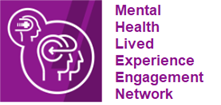— Children and Young People and the Lived Experience Workforce
Abstract
Peer providers are increasingly used by mental health programs to engage transition age youth (TAY, age 16-24) living with serious mental illness. This study elicited TAY clients' perspectives on peer providers' roles, responsibilities, and contribution to TAYs' use of mental health services.
In 2019, six focus groups were conducted with TAY clients (n=24) receiving publicly funded mental health services in Southern California. Results from this analysis included four themes that illustrated the role of peers as perceived by TAY clients, including: 1) building client-peer provider relationships, 2) engaging with mental health services, 3) role-modelling recovery and supporting skill acquisition to instill hope and empowerment, and 4) peer roles and experiences specific to racial/ethnic concordance.
Abstract
The commitment to partnering with consumers and carers remains a stable priority for mental health services. This is evidenced by an emerging lived experience workforce. Research demonstrates that when people share their lived experience they can have a positive impact on the recovery journeys of others. Less clear is the role of young people in peer support roles, especially within child and youth mental health settings.
There is no known dedicated child and youth mental health peer workforce operating within Queensland public mental health services. This paper will challenge the status quo and pose the question “why not”.
Furthermore, this paper will examine how a large child and youth mental health service has developed and sustained a model of meaningful consumer and carer participation for more than ten years. It will analyse the key success factors such as organisation readiness, mutuality and co-design practice. This paper will explore the trajectory of consumer and carer participation to the current work occurring to implement a dedicated youth mental health peer workforce.
Furthermore, it will identify the success factors and limitations and barriers to working alongside young people and present the collaborative partnership between Children’s Health Queensland Hospital and Health Service and Health Consumers Queensland as we embark on co-designing the youth peer support workforce with young people.
Discussion and conclusions: Creating a valued youth peer workforce is more than merely transplanting a model into an organisation, you need to nurture and build the machinery that supports meaningful integration of the lived experience. It is believed that CYMHS has created this foundation and the establishment of a youth peer workforce is a much-desired outcome of years of preparatory work.
About
ABOUT
Young people are at the heart of all that we do at headspace. We know they are experts in their own lives and through youth participation we engage young people to develop solutions for the issues most affecting them.
Acknowledgement of Country
The National Mental Health Consumer and Carer Forum and the National Primary Health Network Mental Health Lived Experience Engagement Network acknowledge the Traditional Custodians of the lands and waters on which we work and live on across Australia. We recognise their continuing connection to land, waters, culture and community. We pay our respects to Elders past and present.
Definition of Aboriginal and Torres Strait Islander Lived Experience
“A lived experience recognises the effects of ongoing negative historical impacts and or specific events on the social and emotional wellbeing of Aboriginal and Torres Strait Islander peoples. It encompasses the cultural, spiritual, physical, emotional and mental wellbeing of the individual, family or community.
“People with lived or living experience of suicide are those who have experienced suicidal thoughts, survived a suicide attempt, cared for someone through a suicidal crisis, been bereaved by suicide or having a loved one who has died by suicide, acknowledging that this experience is significantly different and takes into consideration Aboriginal and Torres Strait Islander peoples ways of understanding social and emotional wellbeing.” - Aboriginal and Torres Strait Islander Lived Experience Centre
We welcome Aboriginal and Torres Strait Islander people to this site and invite them to provide any feedback or items for inclusion.
Recognition of Lived Experience
We also recognise people with lived and living experience of mental ill-health and recovery and the experience of people who are carers, families, kin, or supporters.




